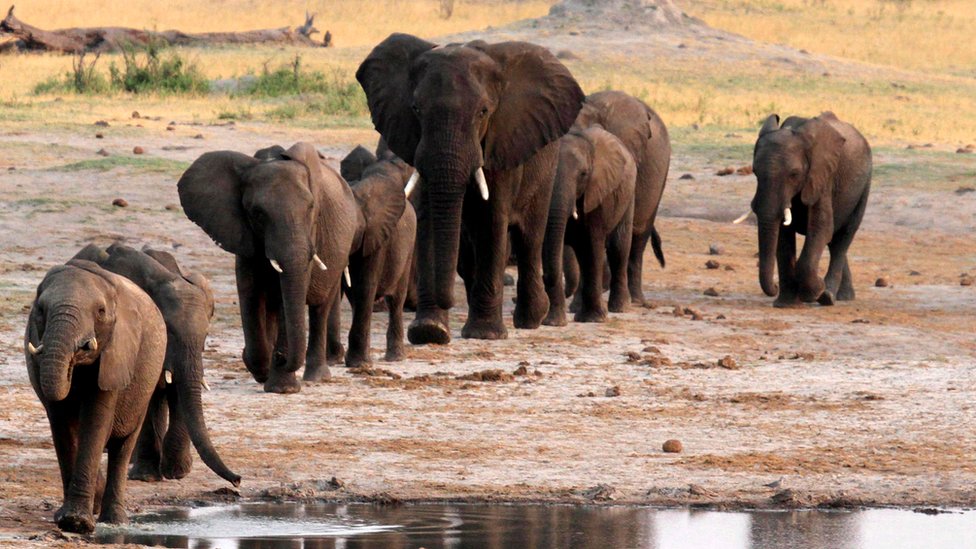
image copyrightGetty Images
Wildlife officials in Zimbabwe say they suspect a bacterial disease is responsible for the deaths of more than 30 elephants since late August.
The elephants were found lying on their stomachs, which experts say suggests they died suddenly.
Park officials do not believe they were the victims of poaching as their tusks had not been removed.
Earlier this year hundreds of elephants were found dead in Botswana from a type of bacterial poisoning.
Zimbabwe Parks and Wildlife Management Authority (ZPWMA) says about 34 elephants have been found so far. However it’s thought that there may be others which have not yet been found.
The animals were discovered in and around forests between Hwange National Park and Victoria Falls.
Post-mortem examinations of some of the elephants found they had inflamed livers and other organs.
ZPWMA Director-General Fulton Mangwanya said it is “unlikely that this disease alone will have any serious overall impact on the survival of the elephant population”.
“The north-west regions of Zimbabwe have an over-abundance of elephants and this outbreak of disease is probably a manifestation of that, particularly in the hot, dry season elephants are stressed by competition for water and food resources,” he said.
The findings come less than a week after wildlife officials in Botswana said toxins made by microscopic algae in water caused the unexplained deaths of hundreds of elephants there.
Officials say a total of 330 elephants are now known to have died from ingesting cyanobacteria.
Cyanobacteria are toxic bacteria which can occur naturally in standing water and sometimes grow into large blooms known as blue-green algae.
Scientists warn that climate change may be making these incidents – known as toxic blooms – more likely, because they favour warm water.
Zimbabwe and Botswana could be home to about half of Africa’s 400,000 elephants, according to experts.
Read MoreFeedzy


